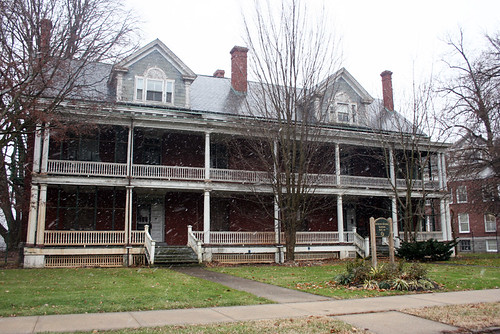 From Curbed:
From Curbed:...it was first on the market in mid '09 for $5 million, then dropped to $2.5 million, then back up to $4.9 million until March. After a few months off, it's now back on the market, asking $4.5 million.
 From Curbed:
From Curbed: From Crains:
From Crains: From Fox 5:
From Fox 5: From the Daily News:
From the Daily News:
 From the Daily News:
From the Daily News: When we last checked in at the crap site at 3-37 Grandview Avenue in Ridgewood, it was relatively clean and for sale, but without a C of O.
When we last checked in at the crap site at 3-37 Grandview Avenue in Ridgewood, it was relatively clean and for sale, but without a C of O. Fast forward 2 months and there still is no C of O and things are now looking kinda dumpy.
Fast forward 2 months and there still is no C of O and things are now looking kinda dumpy. And apparently the Department of Sanitation noticed, too.
And apparently the Department of Sanitation noticed, too.
 From City Limits:
From City Limits: From the Daily News:
From the Daily News: From the Brooklyn Paper:
From the Brooklyn Paper: From the NY Post:
From the NY Post:
 From the Queens Chronicle:
From the Queens Chronicle: From Gothamist:
From Gothamist: From the Times Newsweekly:
From the Times Newsweekly: From the Times Newsweekly:
From the Times Newsweekly: From the Times Ledger:
From the Times Ledger: From the Times Ledger:
From the Times Ledger: From the Brooklyn Downtown Star:
From the Brooklyn Downtown Star: From the Daily News:
From the Daily News: "Ah...autumn. Can you feel it in the air? No? Neither can I, but it must be just around the corner because starting a week and a half ago it was the beginning of leaf-blow and vacuum season at the Maurice Fitzgerald Playground (106 Street & Atlantic Avenue).
"Ah...autumn. Can you feel it in the air? No? Neither can I, but it must be just around the corner because starting a week and a half ago it was the beginning of leaf-blow and vacuum season at the Maurice Fitzgerald Playground (106 Street & Atlantic Avenue).
 City Councilman Thomas White Jr. of Queens died this morning at North Shore LIJ after a long illness, a well-informed source tells the Daily News.
City Councilman Thomas White Jr. of Queens died this morning at North Shore LIJ after a long illness, a well-informed source tells the Daily News.
 From the Daily News:
From the Daily News: From City Limits:
From City Limits: From the Queens Courier:
From the Queens Courier: From Eyewitness News:
From Eyewitness News: From the NY Post:
From the NY Post: From the Queens Chronicle:
From the Queens Chronicle: From the Daily News:
From the Daily News: From the Queens Chronicle:
From the Queens Chronicle: From the Daily News:
From the Daily News: From the Wall Street Journal:
From the Wall Street Journal: From the NY Post:
From the NY Post: From the Queens Chronicle:
From the Queens Chronicle: From the Brooklyn Paper:
From the Brooklyn Paper:  From the Times Ledger:
From the Times Ledger: